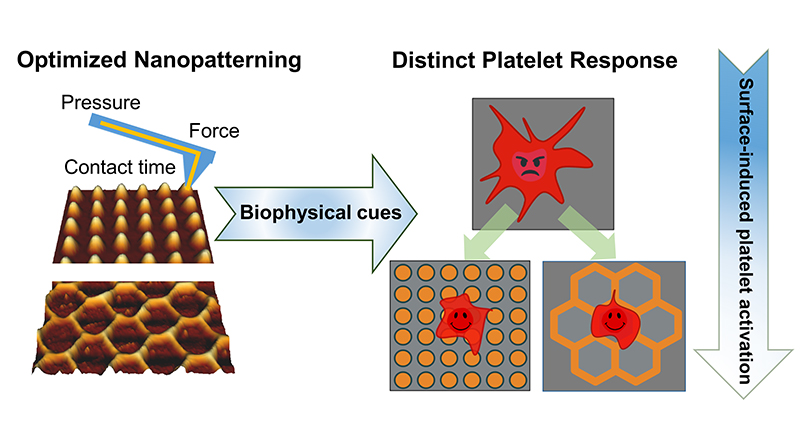
FluidFM-Based Fabrication of Nanopatterns: Promising Surfaces for Platelet Storage Application
-
Author:
G. Apte, M. Hirtz, T.-H. Nguyen
-
Source:
ACS Appl. Mater. Interfaces 14 (2022) 24133-24143
- Date: 2022
-
Platelets are cell fragments from megakaryocytes devoid of the cell nucleus. They are highly sensitive and easily activated by nonphysiological surfaces. Activated platelets have an intrinsic mechanism to release various proteins that participate in multiple pathways, initiating the platelet activation cascade. Surface-induced platelet activation is a challenge encountered during platelet storage, which eventually leads to aggregation of platelets and can thereby result in the degradation of the platelet concentrates. We have previously reported that surface-induced platelet activation can be minimized by either modifying their contact surfaces with polymers or introducing nanogroove patterns underneath the platelets. Here, we investigated the response of platelets to various nanotopographical surfaces printed using fluidic force microscopy (FluidFM). We found that the hemispherical array (grid) and hexagonal tile (hive) structures caused a reduction of surface stiffness, which leads to an inhibition of platelet adhesion. Our results reveal that nanopatterns enable the inhibition of platelet activation on surfaces, thus implying that development in nanotexturing of storage bags can extend the lifetime of platelet concentrates.
